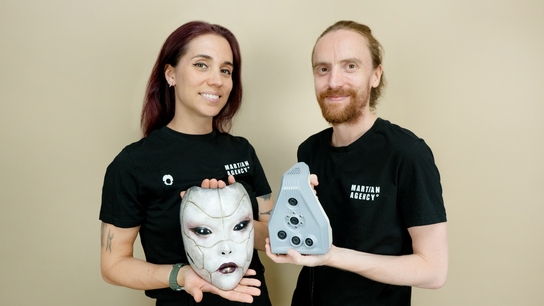Building a 3D content library with Artec Eva
Challenge: To get an ambitious 3D content website up and running by providing high-resolution, detailed 3D models in a wide range of classifications under tight deadlines.
Solution: Artec Eva, Artec Studio
Results: An expansive, catalogued library of high-quality, print-ready 3D models, across dozens of categories.

The development of human civilization has more or less advanced in lockstep with the tools and technology we’ve used to document our progress. We’ve had cave paintings, tens of thousands of years old, then writing in all its forms, the invention of the printing press, photography, and now, the 3D era.
And just like with past technologies, 3D tech is being used in all sorts of ways. It has been a disruptive technology, replacing traditional tools in a range of spheres from reverse engineering, quality inspection, and product design, to healthcare, science and education, and the arts.
Threeding, a tech company founded by a group of students from the Bulgarian National Academy of Art, latched on to this very early on. In 2013, as the quality of 3D printers improved and with prices that made them increasingly accessible, Threeding identified the need for a virtual marketplace where you could buy, sell, or exchange all kinds of color 3D models.
“Not everyone is an artist and designer, and not every object could be designed on a computer, so people have to buy some of the items they would like to print,” said Cveta Partaleva, co-founder at Threeding. “What we did was simply to create a website for them to find all the different things they would like to 3D print.”

This is a modest account of what was clearly a massive challenge: To start with, there was the problem of adequately populating a database with high-quality models from a wide range of categories. The website today has everything from a 3D model of an owl in a top-hat peering curiously at his companion, to a textured model of a human liver.
But the challenge at that time was to capture, in a short space of time and at a reasonable cost, a whole range of 3D content of sufficiently high quality to appeal to clients. To tackle the task at hand, Threeding decided to buy Artec’s 3D scanner Eva.
Artec Eva was simply the ideal choice. The structured-light 3D scanner was specifically designed to quickly render textured and extremely precise 3D models of mid-sized objects. Things like a human bust, an alloy wheel, or a motorcycle exhaust system could all be scanned without a need for targets.
To add to that, Artec Eva was conveniently lightweight and fast. This made it a phenomenal solution for the versatility the challenge demanded, especially with its ability to capture objects of almost any kind. So whether the team was creating precise models for engineering purposes, or scanning historical objects for posterity, Artec Eva was efficient in getting the job done.
“We have done all of the 3D scanning of artifacts with Artec Eva, and we are very thankful to Artec 3D for their great device. Price to value, this is the best 3D scanner on the market,” said Stan Partalev, another co-founder at Threeding. “Furthermore, it works without markers, which is very important for our work with historical artifacts. Those are really special objects and limited physical contact is crucial.”

With this newfound efficiency, Threeding was able to considerably grow their offering to include priceless historical artifacts that would otherwise have been inaccessible to most. In April 2014, they partnered with the Bulgarian Historical Museums of Varna and Pernik to 3D scan museum exhibits. Ancient Thracian, Greek, and Roman sculptures, reliefs, and an arsenal of medieval weapons, all quickly joined the burgeoning line-up of high-definition 3D models.
The benefits were two-fold. Threeding was able to grow its catalog of 3D content, and the museums were able not only to earn commissions on the sales of those models but also to create virtual museums of their own. And with the incredibly precise metric data that comes with Artec Eva’s scans, this opened the door to a host of new possibilities in education and science.

“We are the first company to start scanning cultural heritage for commercial purposes, and also for the benefit of the host party,” Stan explained. “The museums collect a royalty from each sale and receive the models. We added some 50 objects from Pernik and 100+ objects from Varna, and [have plans for another] round of scanning. Currently, we are working on a national level with one of the largest national museums in Central and Eastern Europe... For all this, we have been using Artec’s 3D scanners,” Stan said.

The project’s success was reflected in the 20-25% growth the company enjoyed in the following months. Threeding went on to launch Android and iPhone apps and started on plans to add 3D printing to its available services.
Threeding.com has continued to grow, the founders happy to keep adding more and more 3D content. If these are the cave paintings of our time, we are simply staying true to a time-honored practice as old as human civilization itself.
Scanners behind the story
Try out the world's leading handheld 3D scanners.





